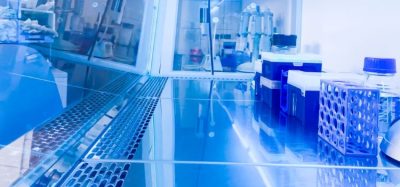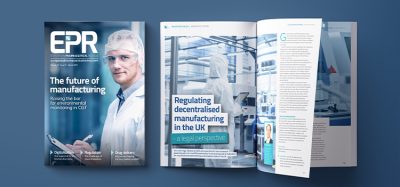The implementation of Rapid Microbiological Methods (Article 1)
Posted: 22 February 2010 | Dr Michael J. Miller
This is the first in a series of articles on rapid microbiological methods that will appear in European Pharmaceutical Review during 2010.


Microbiology trapped in the 19th Century
When the science of microbiology was in its early stages of development, scientists used liquid media for the cultivation of microorganisms. For those who were in need of a method to segregate individual types of organisms, the use of liquid media proved to be a significant disadvantage. This was the case for Dr Robert Koch, who, in 1881, was determined to find an alternative method for his experiments. His laboratory first used aseptically cut slices of potato as a solid culture medium, and later turned to liquid culture supplemented with gelatin, which was subsequently poured into glass plates and allowed to solidify. This technique permitted the scientists to obtain pure cultures of the bacteria that were found to be growing in the form of discreet colonies on the surface of the plates.
Unfortunately, on hot summer days, the gelatin medium would liquefy, rendering it useless for its intended application. Furthermore, this phenomenon was accelerated when certain types of bacteria growing on the surface would produce enzymes capable of digesting the gelatin medium. One of the scientists, Dr Walther Hesse, was frustrated by these events, and he turned to his wife and laboratory assistant, Angelina for help. Walther recalled that his wife’s jellies and puddings remained solid, even in the heat of the day, and when he inquired as to what her secret was, she provided an unusual but simple answer. Angelina was previously made aware of a cooking ingredient called Agar-Agar, which had been used as a gelling agent by Asian chefs for many centuries, and as a result, used the material in many of her recipes. Dr and Mrs Hesse discussed the possibility of using Agar-Agar as the basis for a stable, solid microbiological medium, and subsequent experiments showed that this worked magnificently. This simple kitchen ingredient revolutionised the science of microbiology as it made what had been a difficult task of separating and culturing microorganisms on solid surfaces a routine procedure. Interestingly, more than 125 years later, all microbiology laboratories, in every industry sector, continue to use agar as the most important and widely accepted material for growing microorganisms today. Angelina would be proud…but should we be proud as well?
Although the growth of microbial cells on agar surfaces provides the laboratory with critical information about the amount and the type of organisms that may be present in a sample under evaluation, the time to result is usually longer than what is desired. Days and even weeks may elapse before microbial colonies are visually detected, and in most cases, confluent growth prevents individual organisms from being isolated, necessitating sub-culture onto additional agar media, delaying the time to result even further. Additionally, many laboratories are discovering that microorganisms, when stressed due to nutrient deprivation, or following exposure to sub-lethal concentrations of antimicrobial agents, such as preservatives, disinfectants, heat or decontaminating gases, may not replicate when cultured on artificial media, because the environment is not truly optimal for the resuscitation and subsequent proliferation of organisms that may be present. For these reasons, the modern microbiological laboratory should look toward developing innovative approaches to the detection, quantification and identification of microorganisms. From a quality risk management perspective, this direction is critical for the pharmaceutical and biopharmaceutical industries.
New technologies for pharmaceutical manufacturing
Quality risk management (QRM) is an important part of science-based decision making which is essential for the quality management of pharmaceutical manufacturing. The ICH Q9 guideline defines QRM as a systematic process for the assessment, control, communication and review of risk to the quality of drug product across the product lifecycle1. Similarly, the FDA’s cGMPs for the 21st Century: A Risk-Based Approach, states that using a scientific framework to find ways of mitigating risk while facilitating continuous improvement and innovation in pharmaceutical manufacturing is a key public health objective, and that a new risk-based pharmaceutical quality assessment system will encourage the development of new technologies, such as process analytical technology (PAT), to facilitate continuous manufacturing improvements via implementation of an effective quality system2.
Effective monitoring of our manufacturing processes can help to ensure that a state of control is maintained (providing assurance of the continued capability of processes and controls to meet product quality), areas for continual improvement are identified (helping to understand and reduce process variability), process and product understanding is enhanced, and manufacturing agility and efficiencies are realised (by reducing waste and wasteful activities, reduce lead time and increase manufacturing capacity). From a microbiology perspective, we can apply QRM principles in order to design a process to prevent contamination, investigate ways to correct a contamination event, and assess the potential impact of failing results on the patient. Fortunately, recent advances in alternative microbiological monitoring platforms, such as rapid microbiological methods (RMM), provide the analytical tools necessary to accomplish these tasks.
An introduction to Rapid Microbiological Methods
During the past 20 years, the field of alternative and rapid microbiological methods has been gaining momentum as an area of research and application across a number of technology sectors. In fact, much of the development of new systems for the detection and identification of microorganisms has been driven by consumer and patient needs within the food, beverage, environmental and clinical or health care industries. Recent advances in rapid technologies have also encouraged the pharmaceutical and biopharmaceutical industries to validate and implement RMMs in place of their traditional microbiology methods within QC/QA labs and on the manufacturing floor.
Many rapid microbiological method technologies provide more sensitive, accurate, precise, and reproducible test results when compared with conventional, growth-based methods. Furthermore, they may be fully automated, offer increased sample throughput, operate in a continuous data-collecting mode, provide significantly reduced time-to-result (e.g., from days or weeks to hours or minutes), and for some RMM platforms, obtain results in real-time. These methods have also been shown to detect slow-growers and/or viable but non-cultural microorganisms as compared with standard methods used today. Most importantly, a firm that implements a RMM in support of sterile or non-sterile manufacturing processes may realise significant operational efficiencies during the monitoring and controlling critical process parameters, reducing or eliminating process variability, and reducing the risk to patients. Additional benefits may include the elimination of off-line assays and a reduction in laboratory overhead and headcount, lower inventories (raw material, in-process material, and finished product), a reduction in warehousing space, and a decrease in repeat testing, deviations, out-of-specification investigations, reprocessing or lot rejection.
Current rapid method technologies can detect the presence of diverse types of microorganisms or a specific microbial species, enumerate the number of microorganisms present in a sample, and can identify microbial cultures to the genus, species and sub-species levels. The manner in which microorganisms are detected, quantified or identified will be dependent on the specific technology and instrumentation employed. For example, growth-based technologies rely on the measurement of biochemical or physiological parameters that reflect the growth of microorganisms. These types of systems require the organisms in a sample to proliferate, either on a solid or liquid medium, in order to be detected and/or quantified. Viability-based systems use viability stains and/or cellular markers for the detection and quantification of microorganisms without the need for cellular growth. Artifact-based technologies rely on the analysis of cellular components or the use of probes that are specific for microbial target sites of interest. Nucleic acid-based technologies may utilise PCR-DNA amplification, RNA-based transcription-mediated amplification, 16S rRNA typing, gene sequencing techniques or other novel applications. Spectroscopic methods make use of light scattering and other optical techniques to detect, enumerate and identify microorganisms. Finally, Micro-Electro-Mechanical Systems (MEMS), such as microarrays, biosensors and Lab-On-A-Chip or microfluidic systems offer significantly smaller-sized technology platforms as compared with bench-top instrumentation. For a comprehensive review of featured RMM technologies that are currently available the reader is encouraged to review the Encyclopedia of Rapid Microbiological Methods3.
RMM applications
The opportunities for implementing RMMs in the pharmaceutical and biopharmaceutical industries are far-reaching. Applications include, but are not limited to, raw material and component testing, in-process and pre-sterilisation/filtration bioburden, fermentation and cell culture monitoring, purified/process water testing, environmental monitoring (e.g., surface, air, compressed gases, personnel), bacterial endotoxin testing, microbial limits, antimicrobial effectiveness testing, biological indicator survival studies, sterility testing, media fill failure investigation, and contamination incident assessment.
Strategy for implementation
When a firm is considering replacing a conventional microbiological method with a RMM, it is important to perform a comprehensive due diligence assessment, from both a scientific and a business perspective, in order to select the appropriate technology platform, justify the validation and regulatory plans and establish a robust implementation strategy. There are essentially three steps in developing a technical and business case for introducing a new RMM:
- Review the existing conventional method and recognise potential technology, quality and business opportunities for replacing the method with a new RMM.
- Identify available RMM technologies that can replace the conventional method and meet the future scientific and business needs of the firm. This may include identifying a RMM that can satisfy multiple microbiological applications.
- Develop an economic justification for implementing the RMM including a financial comparison of the RMM and the conventional method that will be replaced.
Once a firm has completed its due diligence assessment and the decision to move forward is approved, the validation, regulatory and implementation plan can be developed. I will discuss each of these topics in greater detail in future articles as part of this European Pharmaceutical Review series on rapid microbiological methods.
References
- ICH Q9: Quality Risk Management. International Conference on Harmonisation of Technical Requirements for Registration of Pharmaceuticals for Human Use. ICH Harmonized Tripartite Guideline, Q9, Current Step 4 version: 2005.
- FDA Final report for pharmaceutical cGMPs for the 21st Century – A risk-based approach. U.S. Department of Health and Human Services, Food and Drug Administration, Rockville, Maryland: 2004.
- Encyclopedia of Rapid Microbiological Methods, Volumes 1-3. Miller, M. J., Ed.; DHI Publishing, River Grove, Illinois and PDA, Bethesda, Maryland: 2005.
About the author
Dr Michael J. Miller is an internationally recognised microbiologist and subject matter expert in pharmaceutical microbiology and the design, validation and implementation of rapid microbiological methods. He is currently the President of Microbiology Consultants, LLC (http://microbiologyconsultants.com). In this role, he is responsible for providing scientific, quality, regulatory and business solutions for the pharmaceutical industry and suppliers of new microbiology technologies. Over the past 21 years, Dr Miller has held numerous R&D, manufacturing, quality, consulting and business development leadership roles at Johnson & Johnson, Eli Lilly and Company, Bausch & Lomb, and Pharmaceutical Systems, Inc.
Dr. Miller has authored over 100 technical publications and presentations in the areas of rapid microbiological methods, PAT, ophthalmics, disinfection and sterilisation, and is the editor of PDA’s Encyclopedia of Rapid Microbiological Methods. He currently serves on a number of PDA’s program and publication committees and advisory boards, and is co-chairing the revision of PDA Technical Report #33: Evaluation, Validation and Implementation of New Microbiological Testing Methods.
Dr. Miller holds a Ph.D. in Microbiology and Biochemistry from Georgia State University (GSU), a B.A. in Anthropology and Sociology from Hobart College, and is currently an adjunct professor at GSU and the University of Waterloo, School of Optometry. He was appointed the John Henry Hobart Fellow in Residence for Ethics and Social Justice, awarded PDA’s Distinguished Service Award and was named Microbiologist of the Year by the Institute of Validation Technology (IVT).







